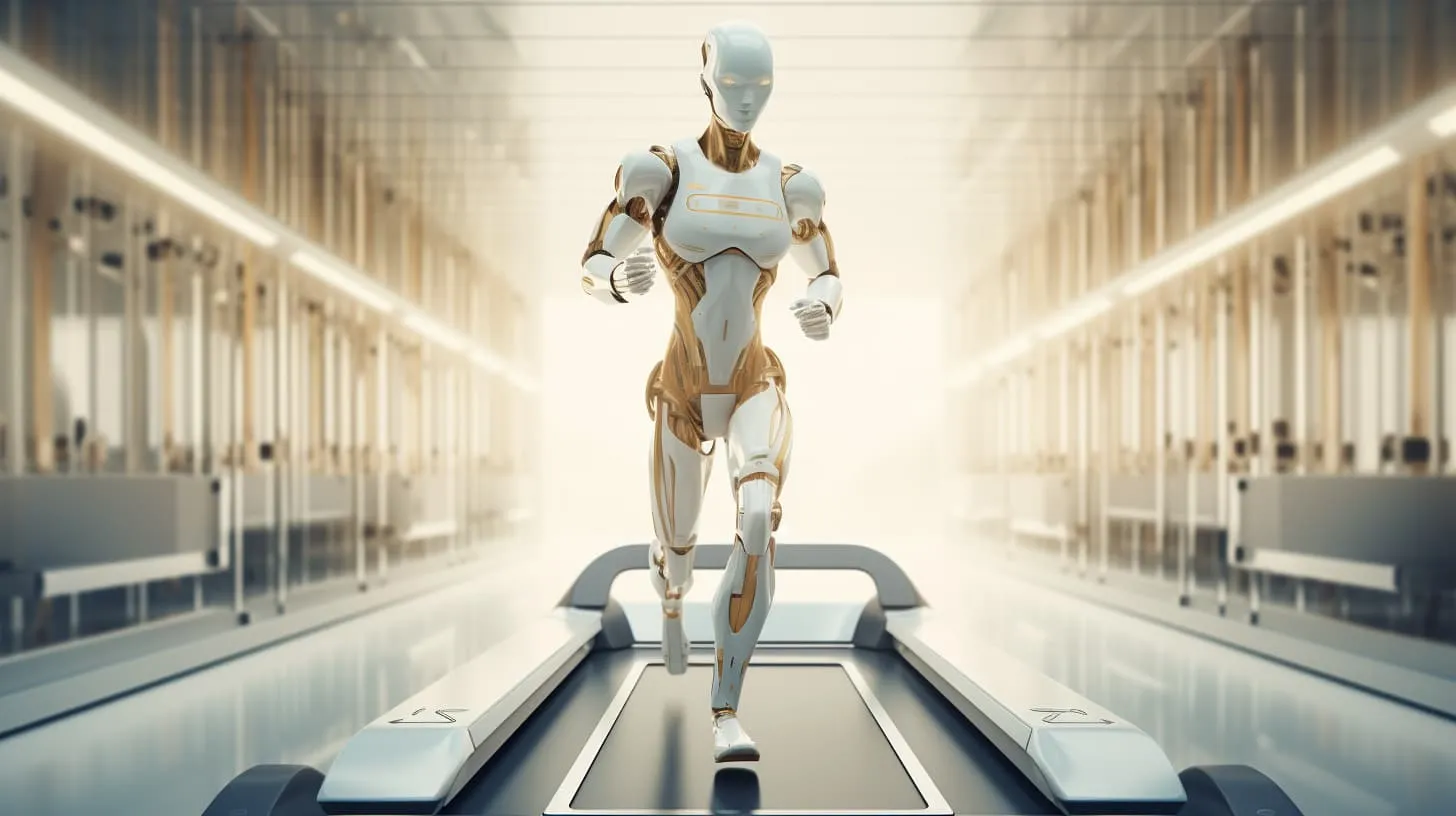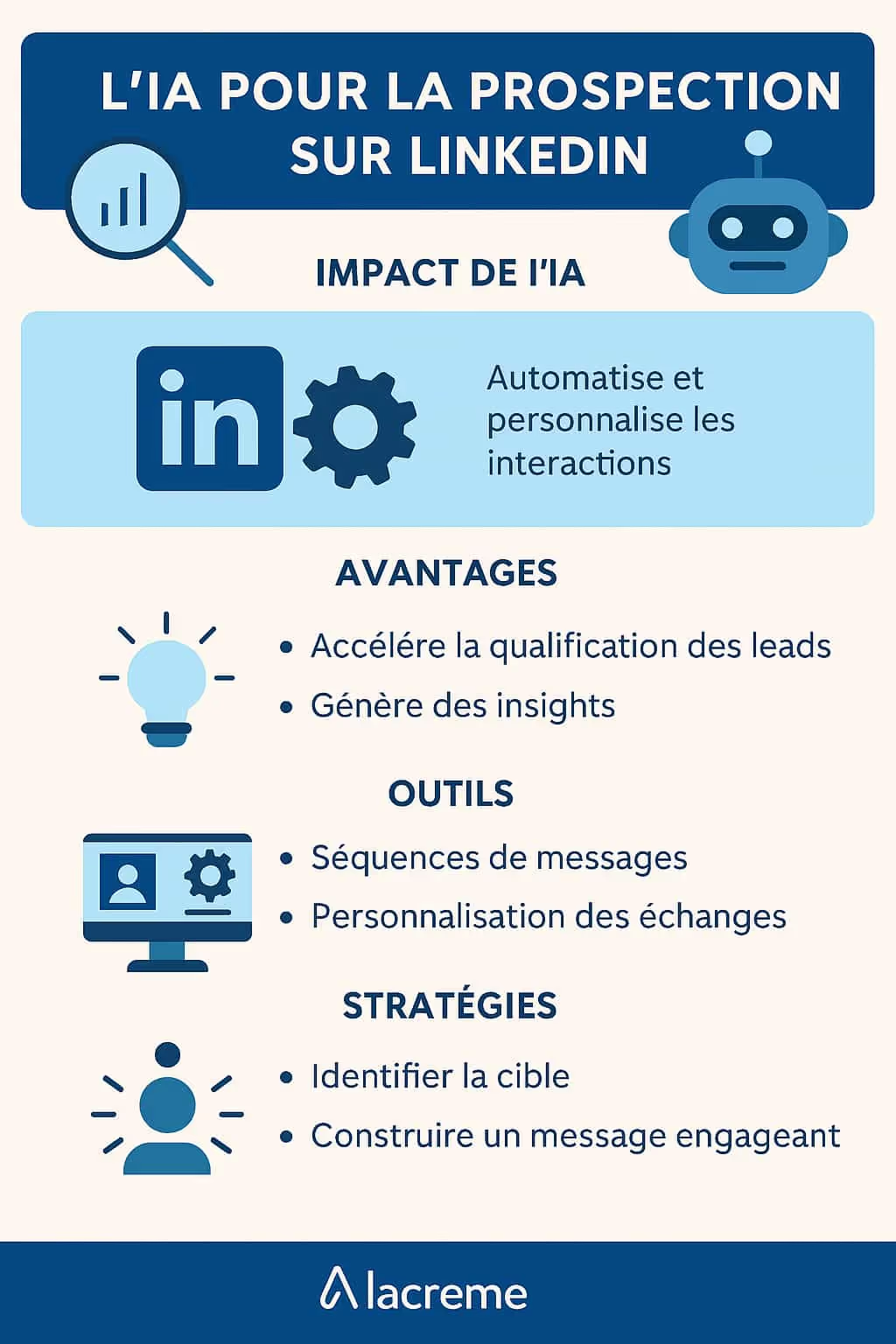THEartificial intelligence (IA) revolutionized the world as we know it. But what exactly is theartificial intelligence and why has it become an essential element in many sectors? For those looking to discover and create AI in Python or even without knowing how to code, this blog post will teach you everything you need to know.
Understanding the Fundamentals ofArtificial intelligence
Key Concepts and Terminologies
THEartificial intelligence, in its essence, involves the creation of machines or software capable of thinking and learning. It is based on principles such asmachine learning (Machine learning), the neural networks, and the Deep learning. These technologies allow computers to process information in a manner similar to the human brain.
Terms like” algorithms ”,” dataset ”, and” model training ” are frequently used in the field ofartificial intelligence. Understanding these concepts is essential for anyone interested in creating or using a model ofartificial intelligence.
History and Evolution ofAI
The history of this technology dates back to the 1950s, when the term was first used. Since then, it has evolved considerably, going from simple automatons to complex systems capable ofdeep learning And of natural language processing.
These examples illustrate how theArtificial can create innovative and transformative applications.
It's not just a technology; it's an ongoing revolution that is redefining human potential. By understanding its foundations, we can better understand how it shapes our future.

How to create artificial intelligence: definition of goals
To succeed in the rapidly changing world ofartificial intelligence, the clear definition of goals is crucial. Whether you are an experienced developer or a beginner enthusiast in the field of this technology, laying a solid foundation for your project is an essential prerequisite. This step is the start for those who want to start creating their own system ofAI.
Identifying Needs and Expectations
The first step in defining the objectives of your projectAI consists in accurately identifying needs and expectations. Ask yourself some essential questions:
- What problem does my project aim to solve?
- Who are the end users of this technology?
- What specific functionalities are required to meet these needs?
It's also important to understand the context in which your AI will be deployed. This involves a thorough analysis of the market, current trends, and available tools, such as GPT chat Of the company OpenAI for text generation, or Dall-E & Midjourney for creating images.
Setting Realistic and Measurable Goals
After identifying needs and expectations, the next step is to set clear, realistic, and measurable goals. These goals should be aligned with the current capabilities of the technology ofAI and available resources.
For example, if you are working on a project for speech recognition, a goal might be to develop a system that can understand and transcribe speech with a 95% accuracy rate in a noisy environment. This objective is both specific (speech recognition in a noisy environment), measurable (95% accuracy rate), achievable (technologically possible), relevant (useful for potential users) and time-bound (set a deadline to reach this objective).

Selecting the Right Technologies
Choosing the right technologies is a key element in the success of a project ofartificial intelligence. Whether you are an expert in AI or a beginner, understanding and selecting the appropriate tools and languages is crucial to designing an effective and innovative solution.
Recommended Programming Languages (Python, etc.)
The choice of programming language plays a major role in the creation of aAI efficient. Python is often the language of choice in this field, thanks to its clear syntax, its versatility, and its vast ecosystem of libraries such as TensorFlow, PyTorch, and Scikit-Learn. This is especially true for those who are learning to create their own AI or that aim to create a AI efficient. These libraries facilitate the development of Machine learning and Deep learning.
Other languages such as R, java, and C++ are also used in the development of intelligent programs, each with its own strengths. R, for example, is preferred for statistical analysis and data visualization, while C++ is chosen for programs that require high performance.
No-Code Platforms and Tools for Beginners
For those who are new to the world of this technology or who do not have advanced coding skills, there are a variety of no-code platforms and tools that make the development ofCode-free AI more accessible. This proves that even without advanced coding skills, one can create innovative solutions, including using a neural network preconstructed. These tools allow users to create and deploy models with little or no programming.
Platforms such as Microsoft's Azure Machine Learning and Google's AutoML offer intuitive user interfaces and guided processes for developing models ofAI. They allow users to build, test, and deploy models ofAI using drag-and-drop and automated machine learning methods.
These no-code tools pave the way for the democratization ofAI, allowing enthusiasts, entrepreneurs and small businesses to participate in the age of this tech, without the need for in-depth technical expertise.
Key steps in creating a AI
The creation of a solution ofartificial intelligence Success involves several essential steps. Each of these steps is crucial to ensure the quality and effectiveness of the system you are developing.
Data Acquisition and Preparation
The first step in creating a AI in the medical sector is the acquisition and preparation of data (= data). Data is the foundation upon which any project is based. It is essential to gather a large amount of data in order to feed your model. Here we are talking about thousands or even hundreds of thousands of pieces of information. They must be collected in an ethical and responsible manner, respecting the standards of confidentiality and consent. They must also be protected via systems of cybersecurity.
Once the data is acquired, it needs to be cleaned and prepared. This involves filtering anomalies, filling in missing values, and standardizing data to ensure consistency. This crucial step, often managed on the cloud, involves managing several thousand varied data.
Choice and Application of Machine Learning Algorithms (Machine learning)
The next step is choosing and applying machine learning algorithms that are right for your project. This decision should be based on the nature of your problem, the size and type of your data, and the specific goals of your project.
Algorithms like neural networks For the Deep learning, vector machines to support classification, or clustering algorithms for data analysis are some of the options available. Everyone has their own strengths and weaknesses, and the choice will depend on the specifics of your project.
Data Annotation and Labeling
Data annotation and labeling are key processes in creating a AI, in particular for image recognition or natural language processing tasks. This step involves adding informative labels or annotations to the data to help machine learning algorithms learn and make more accurate predictions.
For image recognition projects, this could involve labeling objects in images. For language processing, this could mean annotating parts of speech or feelings in texts. This step is often tedious and requires meticulous attention to detail, but it is essential for effective model training.

Programming and Training Your AI
Once the data preparation and algorithm selection steps are complete, it's time to move on to programming and training your intelligent software. These steps are crucial to transform your concept into a functional and effective solution. This stage of the creative process is often the most technical, involving concepts such as neural networks And thedeep learning.
Write the Base Code to create your own artificial intelligence
The programming of your AI Start by writing the basic code. This process involves the use of programming languages, like Python, and the integration of specialized libraries and frameworks such as TensorFlow or PyTorch.
In this step, you will build the architecture of your model, define the functions required for data processing, and integrate the chosen algorithms. Following good coding practices, including clear documentation and code maintenance, is essential to ensure long-term project reliability and maintainability.

Train Your ModelAI With Data
Model training is the core of creating a AI. During this phase, your model will learn to make predictions or decisions based on the data provided.
Training involves feeding the model with large quantities of annotated and labelled data. During this process, the model adjusts its internal parameters to be able to recognize patterns and relationships in the data. It is an iterative process that may require multiple cycles of training and adjustments to improve model accuracy.
It is crucial to monitor the performance of the model throughout this phase to ensure that it is learning properly and to avoid problems such as overfitting, where the model becomes too specialized on training data and loses its ability to generalize.
Test and develop a AI
Once your AI is programmed and trained, the following steps are crucial to ensure its effectiveness and accuracy. Testing and optimizing your model are ongoing processes that play a crucial role in developing a robust and reliable solution. During this test phase, it is crucial to validate that theartificial intelligence works as expected in a variety of scenarios.

Performance Assessment ofAI
Performance evaluation is the first step in validating your smart program. This phase involves measuring the accuracy, efficiency, and reliability of your model under a variety of conditions. It is important to test your model with new and novel data to ensure that it can generalize what it has learned during training to real life situations.
Metrics such as precision, recall, F1 value, and root mean square error are often used to assess model performance. Using a diverse and representative set of tests is crucial to obtain an accurate assessment of model performance.
Refining and Tuning the Model
After evaluating the performance of your artificial intelligence, the next step is refining and tuning the model. This step aims to adjust and optimize the model to improve its performance or reduce errors identified during the evaluation phase.
Refining may involve readjusting model parameters, introducing new training data, or even changing the model architecture. Fine-tuning is often used to refine a pre-trained model by adjusting the weights to a new, specific data set.
This optimization phase is iterative and may require several cycles of evaluation and adjustment to achieve the desired level of performance. It's a delicate balance between improving model accuracy and avoiding overfitting.

Implement and Use Your artificial intelligence
After developing and optimizing your model, it's time to implement and use it in real life uses. This phase is crucial to transform your project into a practical and usable solution.
Integrate theAI in real uses
Integrating your model into real uses involves several technical and operational aspects. You will need to integrate your model ofAI in existing environments, such as web applications, mobile applications, or embedded systems. This often requires close collaboration between developers, system engineers, and experts in AI to ensure a smooth and effective integration.
It's also important to consider the user experience. Your solution should not only function properly, but also integrate intuitively and usefully into the application it's designed for. This may require adjustments and improvements based on feedback from end customers.
Overcoming Deployment Challenges
Deploying your solution can present several challenges, including performance, scalability, and security. Ensuring that it works effectively in production requires rigorous testing and continuous monitoring.
Scalability is another challenge, especially if your model needs to handle a large number of simultaneous users or requests. Finally, data security and confidentiality are paramount, especially in applications dealing with sensitive data.

Evolution and Continuous Improvement of Your AI
The development of a AI is a continuous process. Even after deployment, it's critical to continue to evolve and perfect your artificial intelligence to keep it relevant and effective.
Follow Trends and Innovations by AI
To keep your model at the forefront, it is crucial to stay up to date with the latest trends and innovations in the field. This may involve attending conferences, reading specialized publications, or engaging in online communities of experts.
Technological advances in our industry are rapid and can offer new opportunities to improve your solution. Staying up to date will help you anticipate changes and incorporate new features or techniques into your artificial intelligence.
Continuing Education and Learning Resources
Continuing education is another important aspect of the development ofAI. This can be achieved through online courses, tutorials, workshops, and other learning resources.
Investing in your own learning or that of your team ensures that the skills needed to develop and maintain your AI remain current. This is essential for tackling complex problems and for continuous innovation.

Summary and Next Steps in Your Journey AI
After going through the various stages of creating, developing and deploying a AI, it's helpful to summarize and plan the next steps in your journey into the world ofartificial intelligence.
Summary of Key Points
We explored the fundamental stages of development, from acquiring and preparing data, to programming, training, testing, and optimizing your model. Each step is important and contributes to the creation of a robust and effective solution.
We also discussed the integration ofartificial intelligence in real applications and the importance of its continuous evolution. Staying up to date with the latest trends and constantly learning are essential to remain competitive in this rapidly changing field. You are now ready to start creating projects AI.






